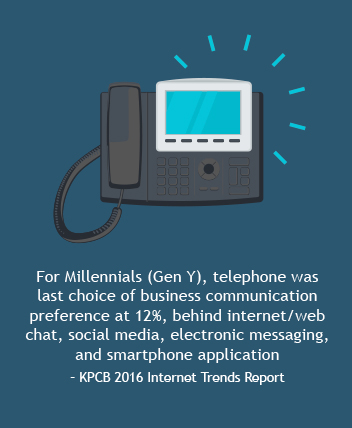
For many hiring managers, the hiring process consists of long email chains or playing phone tag with a job candidate trying to coordinate schedules and get questions answered. But what if that could be solved by using a means of communication that already exists and almost everyone has access to? Cough cough texting. Texting is the most used data service in the world, with 18.7 billion texts sent worldwide every day. And it’s the newest trend to hit the recruitingindustry.
How do hiring managers use it? The actual job sourcing process stays pretty much the same. Once a job candidate is ready to talk to a hiring manager, texting (as opposed to a phone call or email follow-up) can be an authentic and organic continuation of a conversation that has already begun.
Texting, like video interviews, allow for convenience, flexibility and saves time for both the candidate and the employer. Instead of bringing in a candidate for an initial interview or doing a phone interview, texting will do. It’s hard to tell who benefits more – the employer or the job candidate. Maybe this represents a shift in mindset by hiring managers – go to where the people are even though the medium may be less conventional.
Despite what you might think, texting during the hiring process isn’t built just for digital natives like Millennials or Gen Z employees (although the majority would choose texting over telephone for business communications). People that are busy during

the day like nurses or teachers or parents and people travelling or in different time zones – texting is a convenient alternative to setting aside a chunk of time for a phone interview.
IS TEXTING TOO GOOD TO BE TRUE?
However, that doesn’t mean texting is a catchall solution for all employers, or that hiring managers shouldn’t approach the thought of texting a job candidate without a certain degree of hesitation. Texting a job candidate, stereotypically, seems to undermine professionalism and is another channel of communication that HR might have to monitor for compliance reasons. Those are not insignificant concerns and should be thoughtfully and strategically addressed. Below we discuss some of the things you should think about before trying.
WILL CANDIDATES BE MORE LIKELY TO RESPOND IF THEY ARE CONTACTED VIA TEXT?
Could using texting increase the response rate to recruiters if they have another meaningful way of connecting? We’ve established that Millennials and Gen Z workers (a large part of the current and future job market) would be open to, and prefer, using more convenient means of communication. It’s harder to miss a text message, and when you exchange messages, it feels more personal – like there is an actual human being on the other end who will and wants to respond.

DOES TEXTING UNDERCUT PROFESSIONALISM?
A definite issue would be the manner in which job candidates conducted themselves via text. It’s harder to check for typos or assess tone over text. Widely-used abbreviated terms like “u” instead of “you” would be inappropriate in this context. But texting doesn’t have to mean that professionalism goes out the window. Practices and stances on texting as a legitimate form of business communication might need to be modified or evolve. Hiring managers will have to decide what they want and expect from candidates, and candidates should always strive to be professional when communicating in any form with a potential employer.
TEXTING DOESN’T (AND SHOULDN’T) REPLACE HUMAN TO HUMAN INTERACTION.
Texting a job candidate is a top-of-the-funnel function. It doesn’t replace human interaction, it just supplements it in certain stages of the hiring process. Once a hiring manager decides to engage with a job candidate, they can conduct preliminary screenings over text, and then decide whether to bring a candidate in for an in-person interview or not.
CAN TEXTING MAKE JOB, BENEFITS AND COMPANY CULTURE INFORMATION MORE ACCESSIBLE?
Instead of sending a hefty benefits document via email, a recruiter could send a link via text to a document or webpage immediately showcasing company information. Whether it’s the speed of information sharing that texting allows, or more dynamic and interactive format, it encourages user-friendly interfaces and easily digestible information to be viewed and shared on-the-go.
TEXTING MIGHT PREVENT DELAYED RESPONSES OR JOB OFFERS.
No one wants to wait a month to hear back from a potential employer, especially if they aren’t moving forward with the interview process. Texting allows for, and almost requires, more immediate response. Time waiting for a response as a candidate can be agonizing, and it makes life difficult for those waiting to hear back from multiple employers. It could result in a candidate turning down an offer in hopes of hearing back from another employer, without a guarantee that another offer will ever come.
COULD TEXTING SPEED UP THE HIRING PROCESS?
Can recruiters talk to more candidates (and more simultaneously) via text? It’s feasible that a hiring manager could more easily manage communications with several job candidates at the same time over text message. If hiring managers are able to speed up a candidate’s journey through the hiring process, isn’t that a good thing for everyone?
Texting during the hiring process is not without its challenges, but it has the potential to enhance and modernize the hiring process. So, do you think you’ll start texting your next job candidate?